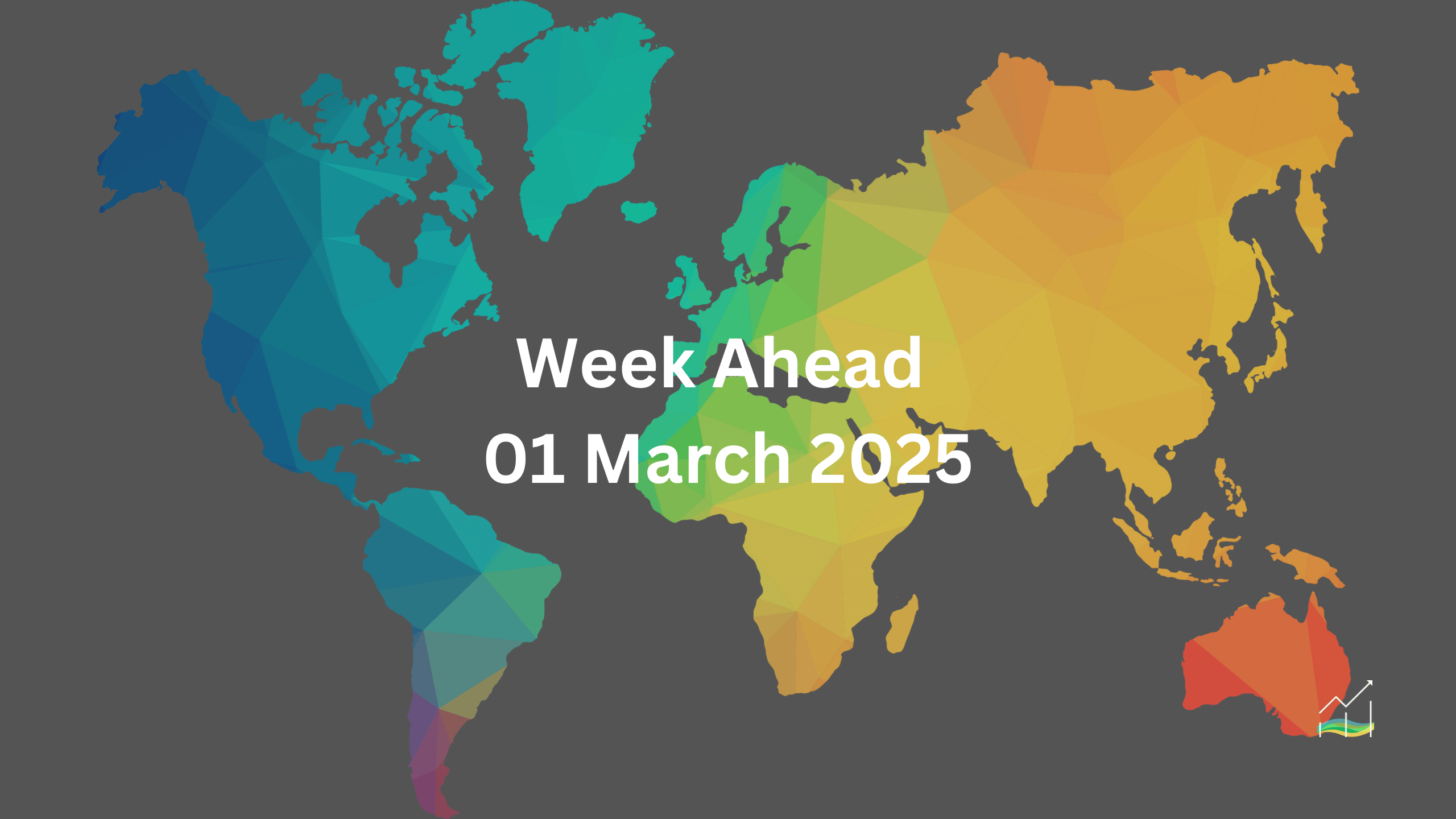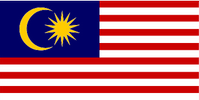01/03/2025 Week Ahead

Global Markets Brace for Turbulence
Key economic events are set to shape financial markets in the coming weeks. The release of U.S. jobs data, a likely interest rate cut by the European Central Bank, and China’s National People’s Congress will be closely watched. Meanwhile, new U.S. tariffs on imports from Canada, Mexico, and China, effective from March 4, have already driven the dollar higher and bond yields lower.
Recent developments indicate a significant shift in global trade and defense policies. While geopolitical tensions persist, U.S. tariff policies and uncertainties surrounding defense commitments are emerging as major concerns for businesses, investors, and policymakers. These tariffs aim to protect domestic industries, encourage reshoring, and generate revenue, but they also pose risks to economic growth, inflation, and industrial sectors. This marks a clear departure from previous multilateral trade strategies.
Market volatility has intensified amid these shifts, causing businesses to exercise caution in investment decisions. U.S. allies that have historically depended on American market access and military protection are now facing disruptions. The Dollar Index, which peaked in mid-January after a strong rally, has experienced a 3.6% decline, as initial skepticism toward tariffs gave way to renewed concerns following fresh announcements of additional levies.
The next several weeks could bring further instability. The postponed 25% tariffs on Canadian and Mexican imports are set to take effect on March 4, while a 25% tariff on steel and aluminum is being considered for March 12. Additional tariffs on autos could follow in April. The economic consequences of these trade policies remain complex. While tariffs can provide temporary advantages to domestic industries, they often lead to higher consumer prices, lower profit margins, and potential currency fluctuations.
Labor market shifts add another layer of uncertainty. Thousands of government jobs have been eliminated, potentially impacting economic stability, as public sector employment traditionally provides resilience during downturns. At the same time, a slowdown in immigration could further tighten labor supply. Over the past year, foreign-born employment has increased significantly, playing an essential role in supporting economic growth through workforce expansion.
The Federal Reserve remains attentive to inflation risks, but policymakers are still expected to begin easing rates later this year. Investors have grown increasingly concerned about an economic slowdown, with markets now pricing in a high probability of a rate cut by June, followed by further reductions later in the year. Meanwhile, other central banks, including the ECB, Bank of England, Bank of Canada, and Reserve Bank of Australia, are also expected to cut rates.
As the global economy navigates this transition, market participants will need to monitor policy shifts closely. The combination of tariffs, monetary policy adjustments, and geopolitical uncertainty could drive further volatility, reshaping the economic landscape in the months ahead.
United States of America
Overview
The February Non-Farm Payrolls (NFP) report, set for release on Friday, will be a critical indicator for U.S. interest rates. January’s data showed weaker-than-expected job growth, yet the unemployment rate fell to 4.0% from 4.1%, and wage growth climbed to 4.1% from 3.8%. These figures align with the Federal Reserve’s cautious approach to rate cuts this year.
At the same time, U.S. financial markets are pricing in three 25 basis-point rate cuts by mid-2026, with the next expected in July. However, uncertainty remains over how recent policy changes, labor market dynamics, and geopolitical risks will shape economic conditions in the months ahead.
Economic Drivers
One of the biggest unknowns is the impact of recent government job cuts. While these reductions could eventually support the case for rate cuts, analysts believe it will take months before they show up in employment data.
Additionally, the broader economic outlook is being shaped by President Trump’s policy plans, including new tariffs set to take effect on March 4. These measures could push inflation higher and weigh on business sentiment. Consumer confidence is already declining due to concerns over spending power and government austerity measures.
Another potential risk is the upcoming U.S. debt ceiling deadline on March 15. If no agreement is reached, a government shutdown could disrupt economic activity, with the severity depending on its length and scale. As of late February, none of the 12 necessary appropriation bills had been passed.
Data and Events
Key data releases this week will provide further insight into the economy’s trajectory:
- Wednesday: ADP private payrolls and January factory orders
- Thursday: Weekly jobless claims, January trade data, and Q4 unit labor costs
- Friday: Non-Farm Payrolls report
- ISM Reports (Monday & Wednesday): These will measure manufacturing and services sector activity, offering a gauge of business confidence following recent policy announcements. Early indicators suggest economic growth remains sluggish.
Price Action
The dollar showed strength in late February after declining for most of the month. The postponement of tariffs on Canada and Mexico initially led to market complacency, but renewed threats of trade restrictions triggered a sharp rally in the Dollar Index, which ended February at two-week highs.
Meanwhile, U.S. interest rates continued their downward trend, with the 2-year Treasury yield falling below 4% for the first time in four months, and the 10-year yield dipping below 4.20%, breaking its 200-day moving average. The Atlanta Fed’s GDP tracker also signaled weakening growth, with estimates shifting from 2.3% to a possible 1.5% contraction.
Key Points:
- February NFP data will be crucial for Fed rate policy.
- Markets expect three 25 bps rate cuts by mid-2026, with the next likely in July.
- Government job cuts may take months to show in employment data.
- Tariffs set for March 4 could impact inflation and consumer sentiment.
- The U.S. debt ceiling deadline on March 15 poses a risk of a government shutdown.
- The dollar rebounded in late February despite declining yields.
- The Atlanta Fed now projects a potential economic contraction.
Australia
Overview
Australia faces a pivotal week as market participants assess the Reserve Bank of Australia’s (RBA) latest monetary policy stance and key economic data. The RBA initiated its first rate cut in February, reducing the official cash rate by 25 basis points, but emphasized that this was not the start of an aggressive easing cycle. Concerns over persistent inflation and a tight labor market continue to shape the central bank’s cautious approach.
The Australian dollar has experienced notable volatility, influenced by both domestic monetary policy and external factors, such as U.S. trade policies and global risk sentiment. Meanwhile, upcoming economic data will provide further insights into the strength of the recovery and potential risks ahead.
Economic Drivers
Despite the rate cut, the RBA remains cautious due to inflation risks, particularly in services, which may require monetary policy to stay restrictive for some time. Additionally, the labor market remains resilient, with strong hiring trends contributing to inflationary pressures.
Political uncertainty also plays a role, with a national election required by May 17. The incumbent Labor government is trailing in the polls, following a broader trend seen in high-income countries where ruling parties have struggled.
Data and Events
Key releases and events this week will provide more clarity on economic conditions:
- Tuesday: RBA meeting minutes—traders will analyze the tone and language used to gauge internal support for the rate cut.
- Wednesday: Q4 GDP data—expected to indicate a slow recovery.
- Wednesday: Speech by RBA Deputy Governor Andrew Hauser—likely to reinforce the cautious stance on rate cuts and highlight ongoing inflation risks.
Price Action
The Australian dollar initially fell to a five-year low below $0.6100 in early February, driven by fears over U.S. tariffs. However, it rebounded above $0.6400 on February 21, retracing part of its decline since last September.
Despite this recovery, momentum has faded as growth concerns take center stage. The RBA’s cautious approach has further weighed on sentiment, with futures markets not fully pricing in another rate cut until July. Currently, around 60 basis points of easing is expected for the remainder of the year. The Australian and New Zealand dollars have underperformed as investors shift focus to economic slowdown risks.
Key Points:
- The RBA cut rates by 25 bps but signaled a cautious approach to further easing.
- Inflation risks, particularly in services, remain a key concern.
- Australia’s labor market remains tight, adding complexity to monetary policy decisions.
- The Q4 GDP report and RBA minutes will be closely analyzed for signs of economic recovery.
- The Australian dollar rebounded but remains under pressure amid growth concerns.
- The national election, due by May 17, adds political uncertainty to the economic outlook.
Canada
Overview
Canada faces a critical week with key jobs data for February due on Friday and trade figures for January set for release on Thursday. The economy showed unexpected resilience in the fourth quarter, supported by previous rate cuts, which has led to speculation that the Bank of Canada (BoC) may hold off on further easing at its upcoming meeting. However, the biggest uncertainty comes from U.S. trade policies, with new tariffs on Canadian goods scheduled to take effect from March 4.
Economic Drivers
While economic growth has been stronger than anticipated, risks remain. The BoC must balance inflation control with potential economic fallout from U.S. trade actions. The U.S. administration’s planned 25% tariffs on Canadian goods—including steel, aluminum, auto, and lumber—could significantly impact Canada’s GDP, with the BoC estimating a potential 3% contraction over two years.
Meanwhile, political uncertainty is rising as Canada’s Liberal Party leadership contest nears its conclusion on March 9. Mark Carney, former governor of the Bank of Canada and Bank of England, leads the race and may face a confidence vote when parliament reconvenes on March 24. Speculation is growing that a snap election could be called as early as April 21.
Data and Events
- Thursday: January trade figures—insights into Canada’s external sector performance ahead of potential tariff disruptions.
- Friday: February employment report—critical for gauging labor market strength and potential implications for BoC policy.
- March 12: BoC meeting—money markets currently price a 50% chance of a rate cut, with a full cut expected by April 16.
- March 9: Liberal Party leadership contest—political developments could influence market sentiment.
Price Action
The Canadian dollar has seen significant volatility amid trade concerns. In early February, the U.S. dollar surged to CAD1.48, its highest level in over two decades, before retreating to a two-month low of CAD1.4150 by mid-February. However, downside momentum has since stalled, and the U.S. dollar appears poised for further gains.
The market remains cautious, pricing in two BoC rate cuts by year-end, with a 40% chance of a third. Meanwhile, the looming implementation of U.S. tariffs could put additional pressure on the Canadian dollar in the coming weeks.
Key Points:
- Canada’s economy showed resilience in Q4, raising the possibility of a BoC pause in rate cuts.
- The BoC estimates U.S. tariffs could reduce GDP by 3% over two years.
- February employment data and January trade figures will be key for market direction.
- The BoC meets on March 12, with markets pricing a 50% chance of a rate cut.
- The Canadian dollar remains vulnerable to trade risks, with the U.S. dollar showing signs of renewed strength.
- Canada’s political landscape remains uncertain, with a potential snap election on the horizon.
China
Overview
China’s annual National People’s Congress (NPC) begins this week, with policymakers expected to unveil economic targets for 2025. The government work report, due Wednesday, will confirm the official GDP growth goal, likely set at “around 5%,” a level that may require additional policy support. While stimulus measures are anticipated, Beijing appears cautious, carefully assessing trade tensions before making major moves.
Economic Drivers
To support economic growth, China is likely to increase government borrowing, with estimates suggesting a fiscal deficit of 4.0% of GDP, up from 3.0% last year. Bond issuance could rise significantly, with projections indicating an increase from 9 trillion yuan to 13 trillion yuan. However, a large-scale stimulus package may not be announced immediately as authorities monitor the economic impact of ongoing trade disputes.
Weak domestic demand continues to weigh on inflation. Many economists expect China to set its 2025 inflation target at 2%, down from previous years’ 3%, reflecting subdued price pressures. Meanwhile, Beijing’s equity market support measures have had limited impact, with the CSI 300 index down 1.1% year-to-date, in contrast to broader gains across Asian markets.
Data and Events
A series of key economic reports will provide insights into China’s economic conditions:
- Monday & Wednesday: Private surveys on manufacturing and services activity for February will indicate economic momentum.
- Friday: Trade data will reveal early effects of U.S. tariffs, with attention on potential Chinese retaliatory measures.
- Sunday: Inflation data is expected to confirm persistent disinflation, reinforcing the need for targeted stimulus.
Price Action
The Chinese yuan has shown stability despite new U.S. tariffs. The onshore yuan fell less than 0.2% in February, while the offshore yuan strengthened by 0.75%. The People’s Bank of China (PBOC) has maintained a narrow trading range for the yuan, allowing gradual adjustments. Meanwhile, China’s 10-year bond yield spread against U.S. Treasuries has narrowed from a record 320 basis points in mid-January to less than 250 basis points by the end of February.
Key Points:
- China’s GDP target is expected to remain at “around 5%” for 2025, requiring policy support.
- Government borrowing is set to increase, pushing the fiscal deficit to 4.0% of GDP.
- Trade tensions remain a major risk, with U.S. tariffs in focus and possible retaliation from China.
- Key data releases this week include manufacturing, trade, and inflation reports.
- Market reaction has been mixed, with limited yuan depreciation and weak domestic equity performance.
Europe
Overview
The European Central Bank (ECB) is set to deliver a 25-basis-point rate cut, bringing the deposit rate to 2.50%. However, the outlook for further cuts remains uncertain, with investors closely monitoring ECB guidance on future rate adjustments. While weak eurozone growth supports additional rate cuts, rising defense spending within the EU poses inflationary risks. Money markets suggest the deposit rate could fall below 2% by September.
Economic Drivers
The ECB will also release updated forecasts for GDP and inflation, shaping expectations for monetary policy. While economic conditions justify rate cuts, geopolitical developments and fiscal policy decisions—such as potential joint EU defense bonds—could influence inflation and long-term growth prospects. Germany's fiscal stance may shift in response to broader economic and political pressures, particularly as Europe faces risks from shifting US policies.
Data and Events
A series of economic reports will provide insights into the eurozone's economic health:
- Monday: February’s preliminary inflation data, final manufacturing PMI for France, Germany, Italy, and the eurozone, and Italy’s annual GDP figures.
- Tuesday: Spain’s unemployment data, as well as Italian and eurozone unemployment figures for January. The Netherlands will also launch a new bond issue.
- Wednesday: January producer price data and final services PMI for major eurozone economies.
- Thursday: Spain and France will hold bond auctions.
- Friday: Germany’s manufacturing orders data for January.
Price Action
The euro rebounded from early February’s lows near $1.0140 following the postponement of US tariffs on Canada and Mexico. However, it failed to break above January’s high of $1.0535. With sideways price action alleviating overbought conditions, momentum indicators now suggest downside risks. The euro remains vulnerable to renewed US tariff threats and broader shifts in global trade policy. Meanwhile, markets expect additional ECB rate cuts, with swaps pricing in a deposit rate of around 1.80% by year-end.
Key Points:
- The ECB is expected to cut rates by 25 bps, bringing the deposit rate to 2.50%.
- The market is pricing in further rate cuts, with expectations for the deposit rate to fall below 2% by September.
- Rising EU defense spending could pose inflationary risks, while weak growth supports cautious rate cuts.
- Key economic data this week includes eurozone inflation, employment figures, and manufacturing reports.
- The euro’s recovery has stalled, with momentum indicators suggesting further downside risks.
Japan
Overview
Expectations for an early interest rate hike by the Bank of Japan (BOJ) are rising, with markets closely watching BOJ Deputy Governor Shinichi Uchida’s remarks on Wednesday for insights into the central bank’s next move. Labor shortages are expected to drive wage growth, supporting consumer spending. Meanwhile, Japan’s bond auctions and economic data will provide further clarity on market conditions.
Economic Drivers
Japan’s labor market remains tight, with January’s jobless rate expected to hold steady at 2.4%. Policymakers see wage growth as a crucial factor in sustaining domestic demand. Inflationary pressures persist, with Japan’s consumer price index (CPI) at 4%—higher than the US CPI for the first time since 1997-1998. The BOJ remains committed to policy normalization, though market expectations for the next rate hike are divided between July and early Q4.
Data and Events
Key economic releases and bond auctions to watch:
- Monday: February auto sales data, an indicator of consumer demand.
- Tuesday: January employment data, with the jobless rate expected at 2.4%. The Ministry of Finance will auction ¥2.6 trillion ($17.35 billion) in 10-year Japanese government bonds (JGBs).
- Wednesday: BOJ Deputy Governor Uchida’s speech on monetary policy outlook.
- Thursday: Auction of ¥900 billion in 30-year JGBs, with higher yields likely attracting demand from institutional investors.
Price Action
A combination of falling US 10-year yields and rising Japanese yields supported yen strength, with the currency gaining over 3% in February. The US dollar, which peaked at JPY159 on January 10, declined throughout February, reaching JPY148.55—its lowest since last October. The next key support level for the dollar is around JPY147.00. Meanwhile, Japan’s 10-year yield hit 1.45% in February, its highest since 2009.
Key Points:
- Markets anticipate a BOJ rate hike, with policy signals expected from Deputy Governor Uchida’s speech.
- Japan’s labor market remains strong, with the jobless rate steady at 2.4%.
- Inflation remains elevated, with Japan’s CPI at 4%, higher than the US for the first time since the late 1990s.
- Key data includes auto sales (Monday), employment figures (Tuesday), and bond auctions on Tuesday and Thursday.
- The yen gained over 3% in February, with the dollar’s next key support level at JPY147.00.
United Kingdom
Overview
The UK’s economic landscape remains in focus with key data releases on mortgage lending, consumer credit, and economic growth. Sterling has shown strength but faces potential downside risks, while markets speculate on the Bank of England’s (BoE) next move.
Economic Drivers
The British economy showed marginal growth of 0.1% in Q4 2024 after stagnating in Q3. Early estimates suggest a slightly stronger Q1 performance of around 0.3%. The UK government plans to fund increased defense spending by cutting its foreign aid budget. Meanwhile, trade tensions remain a concern, though the UK may avoid the harshest US tariffs due to its small bilateral trade surplus with the US.
Data and Events
- Monday: Bank of England releases January consumer credit, mortgage lending, and mortgage approval data. Recent trends suggest mortgage approvals may remain stagnant.
- Monday & Wednesday: Final manufacturing and services PMI surveys for February will be published.
- Tuesday & Wednesday: The UK’s Debt Management Office will auction gilts maturing in 2054 (Tuesday) and 2030 (Wednesday).
Price Action
Sterling has rebounded from its mid-January low of $1.21, reaching nearly $1.2715 on February 26—its highest in two months. However, the rally may have peaked, with a potential pullback toward the $1.2300–$1.2400 range in the coming weeks. The BoE meets on March 20, but a rate cut is unlikely given strong wage growth and persistent inflation (core at 3.7% and services at 5.0%). The swaps market suggests an 80% chance of a May cut, with another expected in H2 2024.
Key Points:
- UK mortgage approvals have stalled, with little change expected in January’s data.
- The economy grew by 0.1% in Q4 2024, with Q1 growth estimated at 0.3%.
- The UK’s increased defense spending will be funded by cuts to its foreign aid program.
- The BoE is unlikely to cut rates in March due to wage growth and strong core inflation.
- Sterling peaked at $1.2715 but may decline toward $1.2300–$1.2400 in the coming weeks.
- UK gilt auctions are scheduled for Tuesday (2054 maturity) and Wednesday (2030 maturity).
© 2025 SKONE Enterprise (003319453-V). All rights reserved.
The content on this site is for informational purposes only and does not constitute financial advice.


